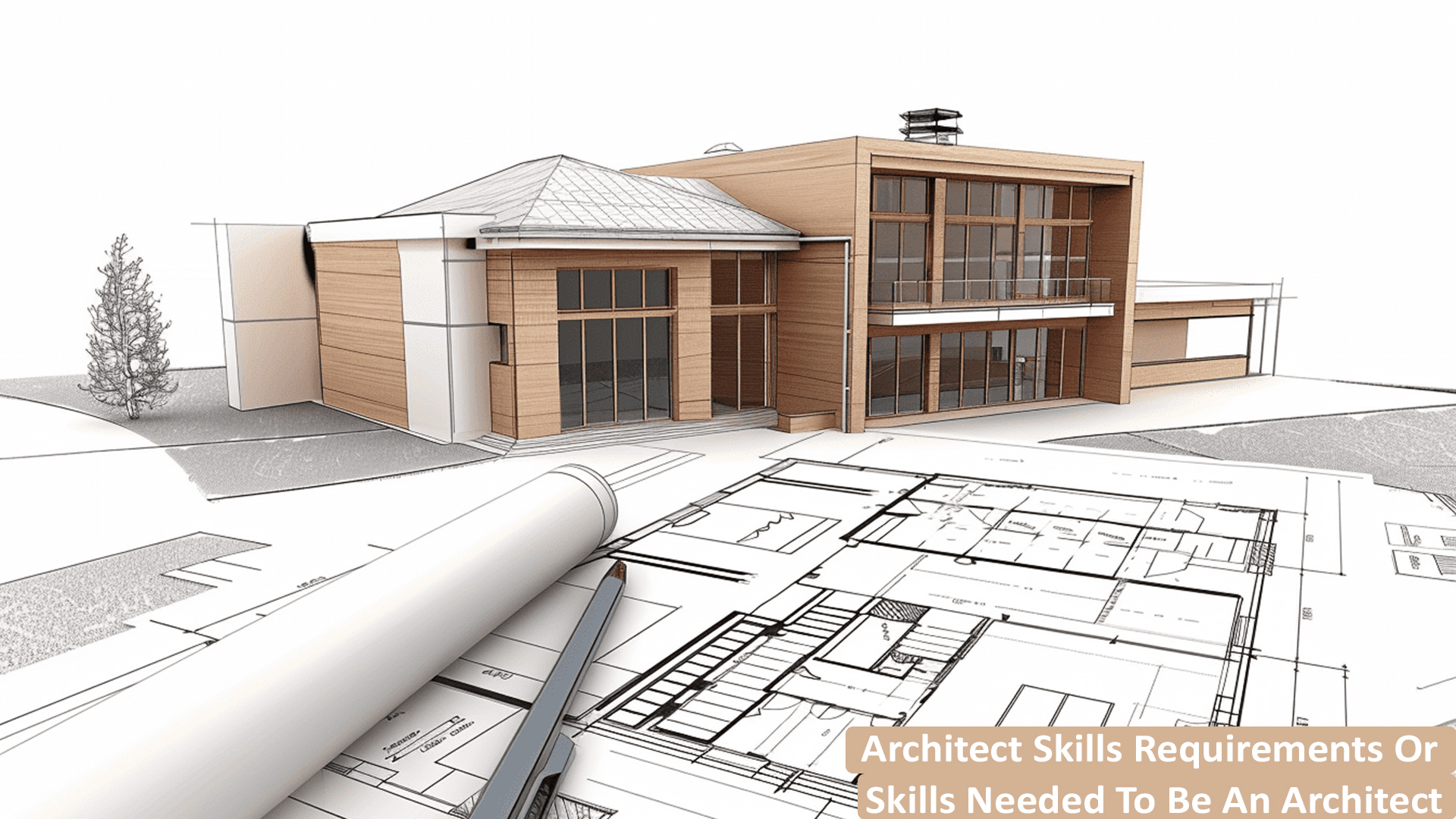Comprehending the Diverse Career Paths Available for Aspiring Architect
As an aspiring Architect, you have a globe of profession courses waiting for you. Each course provides one-of-a-kind difficulties and possibilities to apply your creative thinking and technical knowledge. Whether you're attracted to conventional style or the nuances of lasting design, there's a particular niche that aligns with your rate of interests. Recognizing these diverse options can shape your expert journey, yet which direction will you select to discover initially?
Traditional Design: Creating Structures and Frameworks
Conventional design concentrates on designing buildings and structures that blend performance with visual allure. As you discover this area, you'll appreciate the elaborate equilibrium in between kind and objective. You'll learn to draw motivation from historical styles, integrating aspects like proportion, products, and workmanship. Your layouts can reflect cultural heritage, showcasing local traditions while meeting contemporary requirements.
You'll establish skills in drafting, model-making, and site evaluation, enabling you to picture and interact your ideas efficiently. Involving with customers, you'll require to comprehend their vision and translate it into viable layouts.
Moreover, building codes and sustainability techniques are crucial in your job, ensuring your structures are eco pleasant and safe. As you expand in your occupation, you'll discover opportunities in residential, business, or also remediation tasks, each offering special difficulties. Welcoming standard architecture leads the method for a fulfilling occupation that pays homage to the past while forming the future.
Urban Planning: Forming Neighborhoods and Public Spaces
As an ambitious Architect, you can play an important duty as an urban organizer, transforming just how communities work and interact. By utilizing community interaction strategies, you'll ensure that residents have a voice fit their environment. And also, integrating lasting design principles will certainly help produce rooms that not only fulfill today's requirements yet also shield the future.
Function of Urban Planners
While lots of may believe of designers as the sole visionaries behind structures, city organizers play a crucial duty in forming the wider landscape of neighborhoods and public spaces. By collaborating with various stakeholders, you'll aid make parks, transport systems, and property locations that promote social interaction and accessibility. Your knowledge in spatial design and community dynamics allows you to envision future growth while maintaining social heritage.
Area Interaction Methods
Effective community engagement techniques are important for city coordinators to assure that the voices of homeowners are listened to and valued in the planning procedure. To foster meaningful discussion, you must focus on open online forums and workshops where community participants can express their ideas and problems. Use surveys and social media sites to reach a more comprehensive target market, guaranteeing varied point of views are consisted of. Collaborating with neighborhood organizations can enhance trust and promote deeper connections. It is essential to give clear information regarding decision-making procedures and suggested tasks, enabling homeowners to really feel informed and equipped. By actively integrating and listening comments, you'll develop spaces that show the community's demands, inevitably bring about even more successful and lasting metropolitan atmospheres. Accept transparency and constant discussion for lasting influence.
Sustainable Layout Principles
When creating urban spaces, integrating sustainable style concepts is vital for creating atmospheres that prosper both environmentally and socially. Take into consideration integrating green areas, like parks and yards, to boost biodiversity and enhance air quality.
Designing with water preservation in mind is additionally vital-- consider rainfall gardens and absorptive surface areas to take care of stormwater. Involving area members during the planning procedure assurances that the spaces you develop meet their demands and encourage social communication. By embracing these principles, you'll add to dynamic, sustainable metropolitan landscapes that benefit every person.

Landscape Architecture: Producing Lasting Outdoor Settings
As you discover landscape architecture, you'll discover important style concepts that develop beautiful and useful outdoor areas. Lasting methods play a vital role in guaranteeing these settings prosper while reducing ecological effect. And also, you'll discover a variety of occupation opportunities that enable you to make a real distinction in how individuals interact with nature.
Layout Principles in Landscape
Recognizing style principles in landscape architecture is crucial for producing sustainable exterior settings that integrate with nature. You'll require to consider aspects like scale, balance, and percentage to ensure your layouts really feel natural and inviting. Integrating indigenous plants not only enhances biodiversity yet likewise decreases water usage, making your landscape resilient. Consider the flow of area and exactly how individuals connect with it; pathways and seating areas ought to welcome expedition and leisure. Furthermore, take note of seasonal changes, creating with materials that enhance the surroundings year-round (Architect). By prioritizing sustainability and visual appeals, you can develop outside rooms that enrich the community and advertise well-being. Welcoming these principles will certainly set a solid foundation for your job in landscape design.
Sustainable Practices Summary
Lasting practices in landscape design not only focus on aesthetic appeals however also prioritize eco-friendly health and source preservation. By integrating native plants, you boost biodiversity and reduce the requirement for chemical plant foods and chemicals. Implementing efficient irrigation systems assists preserve water and decreases runoff, safeguarding close-by ecological communities. You can make rooms that advertise dirt health and wellness, such as making use of natural products and practicing permaculture principles. Additionally, incorporating environment-friendly framework, like rainfall yards and permeable pavements, aids in stormwater administration and lowers urban heat. When you develop outside environments with sustainability in mind, you add to a healthier world and provide areas that cultivate community link. Ultimately, these techniques ensure your designs benefit both individuals and the atmosphere for several years to come.
Profession Opportunities Exploration
With a solid structure in lasting techniques, landscape style offers a variety of occupation courses that permit you to make a meaningful effect on the setting. You can function as a landscape developer, developing aesthetically pleasing and functional outdoor spaces, or specialize in ecological remediation, assisting to restore broken communities. Urban coordinators usually team up with landscape architects to create eco-friendly areas in city setups, improving city livability. If you're enthusiastic about education and learning, take into consideration ending up being a landscape design teacher, motivating future generations. In addition, you could deal with nonprofits focused on environmental sustainability or take part in study to innovate new methods. Each path not only forms stunning environments yet also cultivates a healthier world for future generations.
Sustainable Style: Concentrating On Eco-Friendly Practices
As you discover your career in design, accepting environmentally friendly techniques can set you apart in an affordable field. Lasting design concentrates on creating structures that minimize ecological impact while improving occupant wellness. By incorporating sustainable products, energy-efficient systems, and sustainable structure techniques, you'll add to a greener future.
Start by obtaining understanding of green accreditations like browse around this site LEED or BREEAM, which can bolster your qualifications. Consider just how natural light, air flow, and thermal performance can enhance layout. Collaborate with designers and ecological look what i found consultants to innovate services that lower waste and conserve resources.
Don't fail to remember the relevance of community participation-- interesting local stakeholders can influence layouts that integrate with the environment. As clients significantly focus on sustainability, your expertise in environment-friendly techniques will certainly not just bring in jobs however also meet your enthusiasm for liable style. Welcome this essential aspect of the profession, and view your profession thrive.
Historic Preservation: Safeguarding and Restoring Cultural Heritage
While you commence on your building trip, take into consideration the crucial role of historical preservation in maintaining our cultural heritage. This field concentrates on the security and remediation of significant structures, sites, and frameworks that tell the tales of our past. By participating in historic preservation, you'll help guard the building tradition that shapes community identification.
As a historical preservation Architect, you'll assess historical significance and analyze the condition of structures. You'll function carefully with preservationists and historians to assure authentic restoration methods are employed. This job path permits you to blend creative thinking with research, allowing you to develop solutions that appreciate initial materials and workmanship.
Your work not just contributes to sustainability by recycling existing buildings yet also promotes a feeling of pride within areas. Accepting this path will certainly assist you become a guardian of history, preserving the tales and aesthetic appeals that enrich our lives.
Interior Style: Enhancing Indoor Spaces
Historic preservation and indoor style both share a dedication to improving the constructed environment, however they concentrate on different elements. While historical conservation emphasizes maintaining a structure's social and historic value, interior design absolutely nos in on maximizing indoor rooms for performance and aesthetics.
As a hopeful Architect, you'll locate that indoor style allows you to blend imagination with technical abilities. You'll create rooms that not just look good but also promote comfort and effectiveness. This field includes comprehending just how light, shade, and products connect within a room, influencing mood and usability.
You'll work with different jobs, from property homes to business workplaces, making sure that each environment fulfills the requirements of its occupants. By focusing on user experience, you can change insides into motivating and practical areas, making a considerable effect on how people communicate with their surroundings. Embrace the opportunity to boost interior atmospheres and shape the way individuals function and live.
Industrial Style: Merging Performance With Looks
Commercial design plays a necessary duty in creating products that flawlessly mix visual appeals with capability, guaranteeing that what you use everyday is not only aesthetically attractive but additionally sensible. As a hopeful Architect, you might immerse on your own in this field, focusing on developing everything from furnishings to consumer electronic devices. Your job involves recognizing customer needs, products, and manufacturing procedures, allowing you to develop ingenious remedies that improve day-to-day experiences.
In commercial design, you'll commonly work together with designers, marketing experts, and makers, ensuring that your styles are not just gorgeous however additionally possible. You'll discover to stabilize form and function, prioritizing use without giving up style. By developing your abilities in laying out, 3D modeling, and prototyping, you'll be well-equipped to bring your ideas to life. This occupation course provides a dynamic setting where creative thinking fulfills functionality, making it a fulfilling choice for architects interested in forming the items of tomorrow.
Frequently Asked Questions
What Educational Accreditations Do I Need to Become an Engineer?
To come to be a designer, you'll need a specialist degree in architecture, typically a Bachelor's or Master's. In addition, you'll have to finish a teaching fellowship and pass the Architect Enrollment Assessment to practice legitimately.
Are There Qualification Demands for Different Architectural Career Paths?
Yes, there're qualification demands for numerous architectural paths. Architect. You'll i was reading this require to pass exams, full internships, and occasionally go after specialized training, relying on your selected emphasis, like landscape architecture, city style, or historical preservation
What Software Program Skills Are Essential for Designers Today?

How Can I Gain Practical Experience While Researching Design?
You can gain sensible experience by interning at architectural firms, getting involved in style competitions, offering for area tasks, or working together with classmates on real-world assignments. These chances enhance your abilities and build useful connections in the sector.
What Job Opportunities Exist Outdoors Conventional Style Firms?
You can explore different job chances outside traditional design companies, like urban preparation, interior style, landscape style, building administration, realty growth, and even functions in sustainability consulting. Each deals special difficulties and rewards.
Whether you're drawn to standard style or the nuances of sustainable style, there's a niche that lines up with your passions.When designing metropolitan areas, including lasting design principles is vital for creating environments that prosper both environmentally and socially.As you discover landscape architecture, you'll discover necessary layout concepts that create useful and beautiful outdoor areas.Comprehending layout concepts in landscape style is essential for creating sustainable outdoor atmospheres that balance with nature.In industrial style, you'll typically team up with designers, suppliers, and marketers, making sure that your styles are not just stunning but also feasible.
Comments on “Architect Guide to Eco-Friendly Building Materials”